Scott Holiday talks Rival Sons' Hollow Bones, solos and becoming Mr Fuzzlord
Lessons learned from the primal rock guitarist
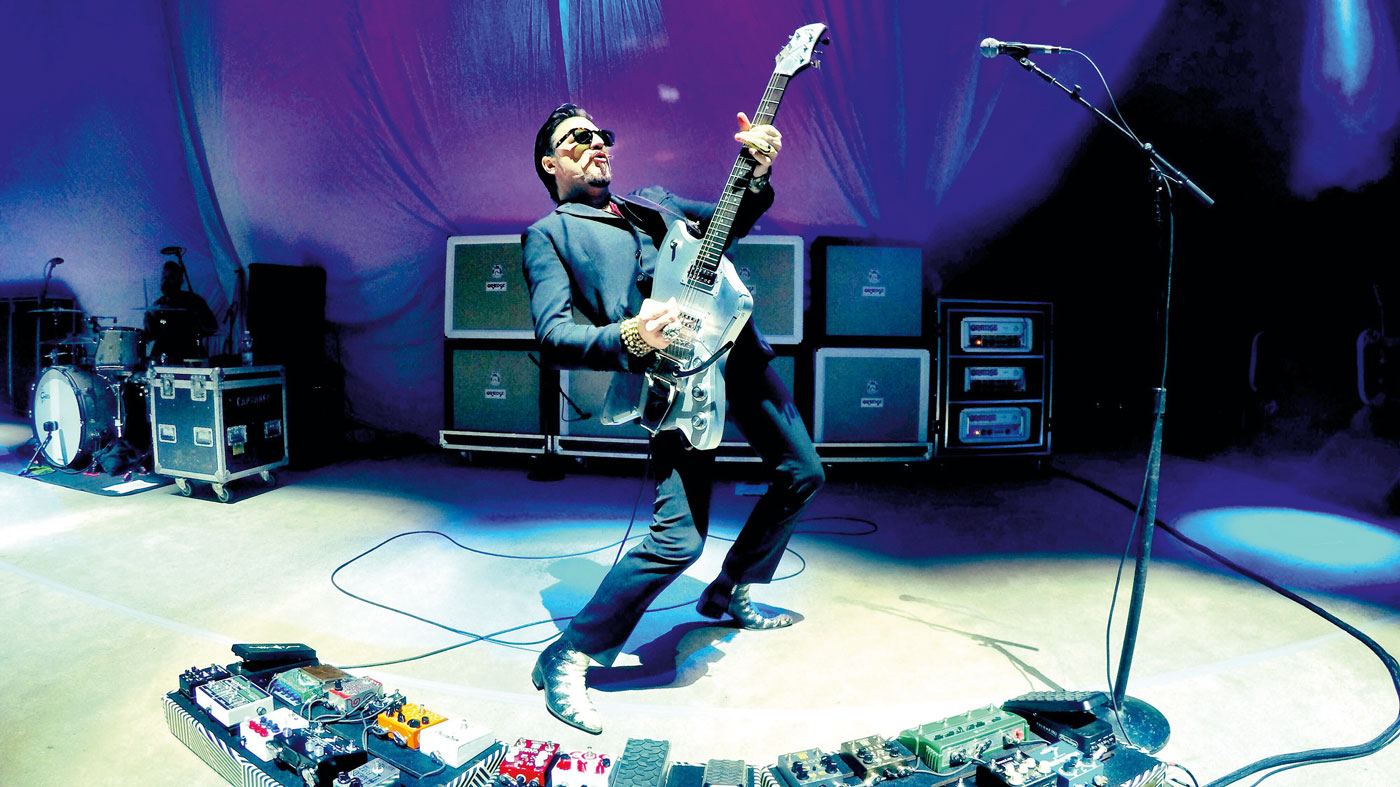
Introduction
Rival Sons mix hard graft with harder riffing to create one of the great rock bands of the 21st century - ‘Fuzzlord’ Scott Holiday opens his mind to us about new album, Hollow Bones
Rock has changed. Music has changed, and for any band that formed on the wrong side of 2005 the old tour/record/tour approach to success doesn’t really work anymore to build success or any kind of living, does it?
LA’s Rival Sons are an exceptional proposition that brings old school values to a new era
LA’s Rival Sons might beg to differ, but then they are an exceptional proposition that brings old school values to a new era. The Led Zeppelin, Free, The Doors and Deep Purple comparisons aren’t lazy - they stand for a mark of quality that Rival Sons’ have proved worthy of since they formed in 2009.
This is the hard-working band that Black Sabbath chose as their support for their final ever tour, and the Birmingham metal legends’ innate ability to go into a studio in their heyday and create dark magic very much applies to Scott Holiday and his bandmates, too.
Hollow Bones is the latest testament to that, again recorded with longtime producer Dave Cobb at his Nashville studio. And it’s very, very good; sizzling with the primal energy of soul and blues power of a band who are equal parts of a whole like the greats they’re compared to. But one also unafraid to branch out when then the song dictates.
We meet the Fuzzlord in their guitar corner to find out what we can learn about how Scott approaches his role in the band…
Don't Miss
Rival Sons' Scott Holiday talks Jimmy Page, riff writing and epic guitar performances
Rival Sons' Jay Buchanan talks vocal heroes, honesty and Van Morrison
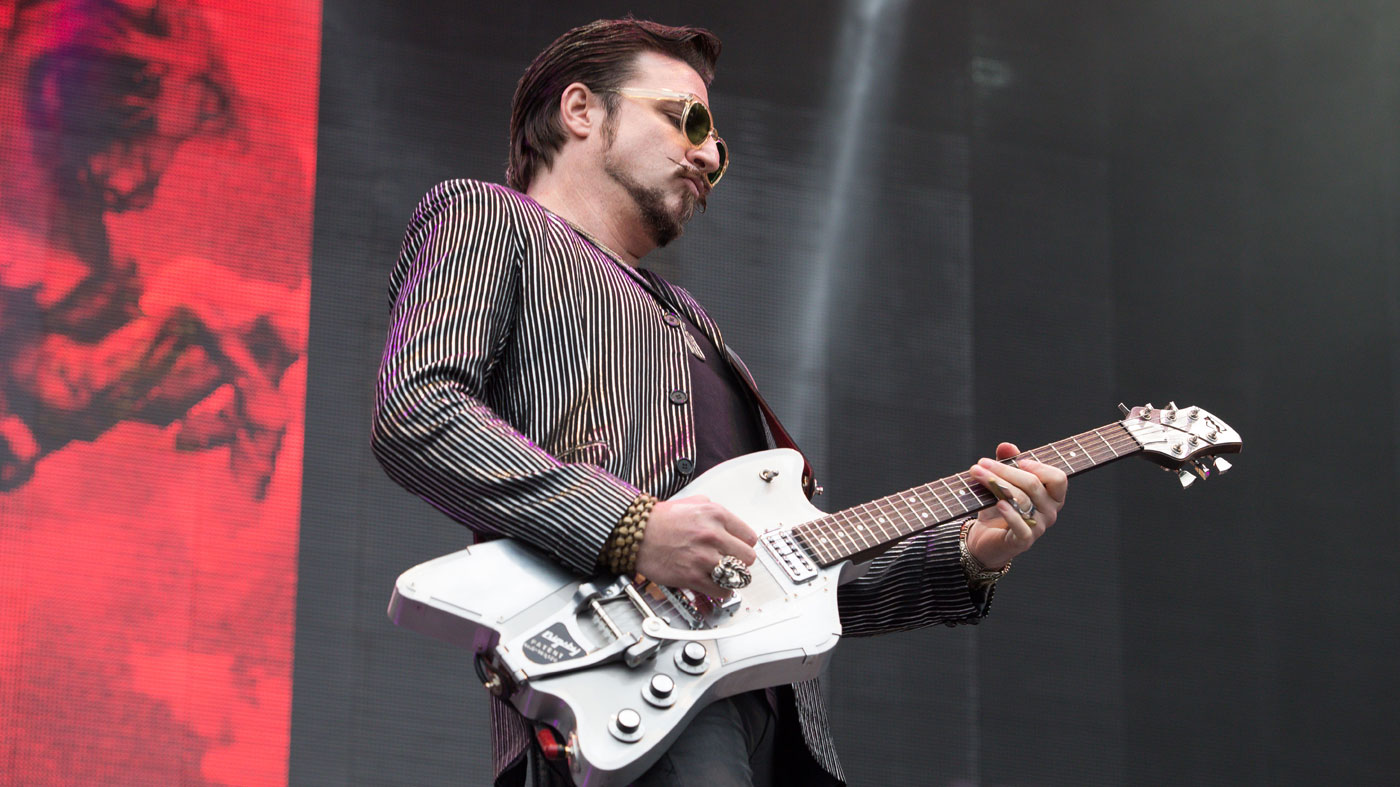
Work on instinct
The creative and recording processes go hand in hand for Rival Sons
“I will take some riffs in there every time for sure. I write riffs on an acoustic most of the time. I’ll write on a classical guitar with gut strings. A good riff should sound great on acoustic and it helps with the percussiveness when you start there.
You’re trying to capture the wild animal instead of working day after day to make something good.
“That said, a lot of what will get used is usually something that happens off the floor but I’ll take themes and chord changes and riffs in there. And they’ll change as we start to feel it out.
“It’s really that whole lightning in the bottle thing, where you’re trying to capture the wild animal instead of working day after day to make something good. When you’re doing it the way we do it, very, very quickly, the inspiration of the moment really inspires more than anything.
“So I have a little starting point and I’m happy to change it and evolve it. If Michael [Miley] is going to play something different on the drums that inspires me I’ll change the riff; I’ll change the meter, change the one… things happen very organically like that.
“It’s like massaging the wrinkles out. If you’re carpeting a room or wallpapering, you’re massaging the bubbles out and that’s kind of how working the song out is so it’s how it should be. And there it is, that’s where the one is, that’s where the riff should lie and this is where the down [beat] is. It works very organically like that.”
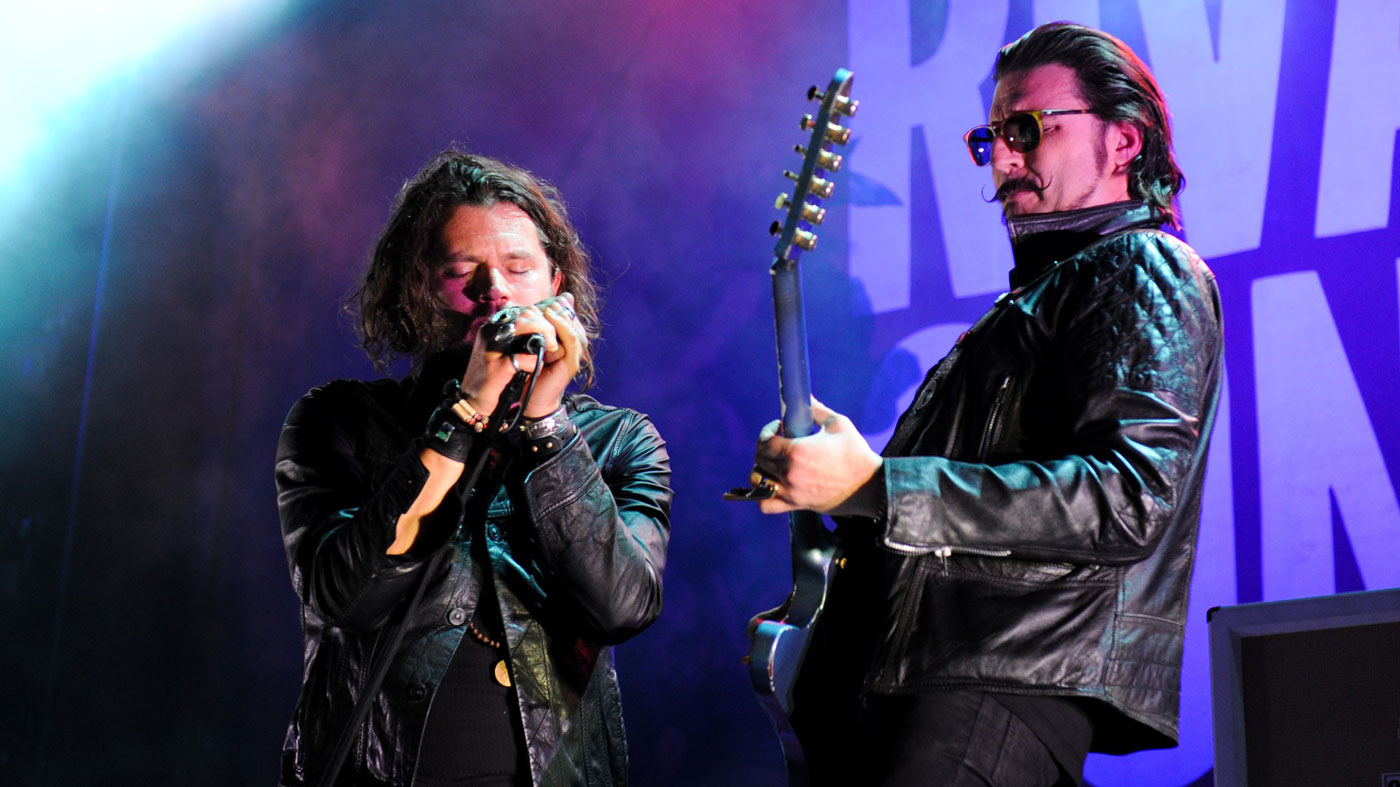
Set your agenda
Scott’s highly adaptable in the studio, but he still has goals as a player
“I think there will be chordally, modally and sonically things for me, if not then specific songs, I worked on with this record. There were a couple of things I was working on thematically from my end of guitar and melody.
I worked on a whole bunch of new sounds on this record and I ended up using, serendipitously, a baritone guitar
“I worked on a whole bunch of new sounds on this record and I ended up using, serendipitously, a baritone guitar, which I hadn’t used on any other records. That wasn’t planned, and I wanted to introduce a tuning that I rarely use but I had used it in the past on songs like Nava and Flames Of Lanka [DADGAD down half a step C#G#C#F#G# C#] and old stuff when I was really young.
“I wanted to use that on a more electric level which I did on Thundering Voices, and there was actually four more other songs in the process that didn’t quite make the cut.”
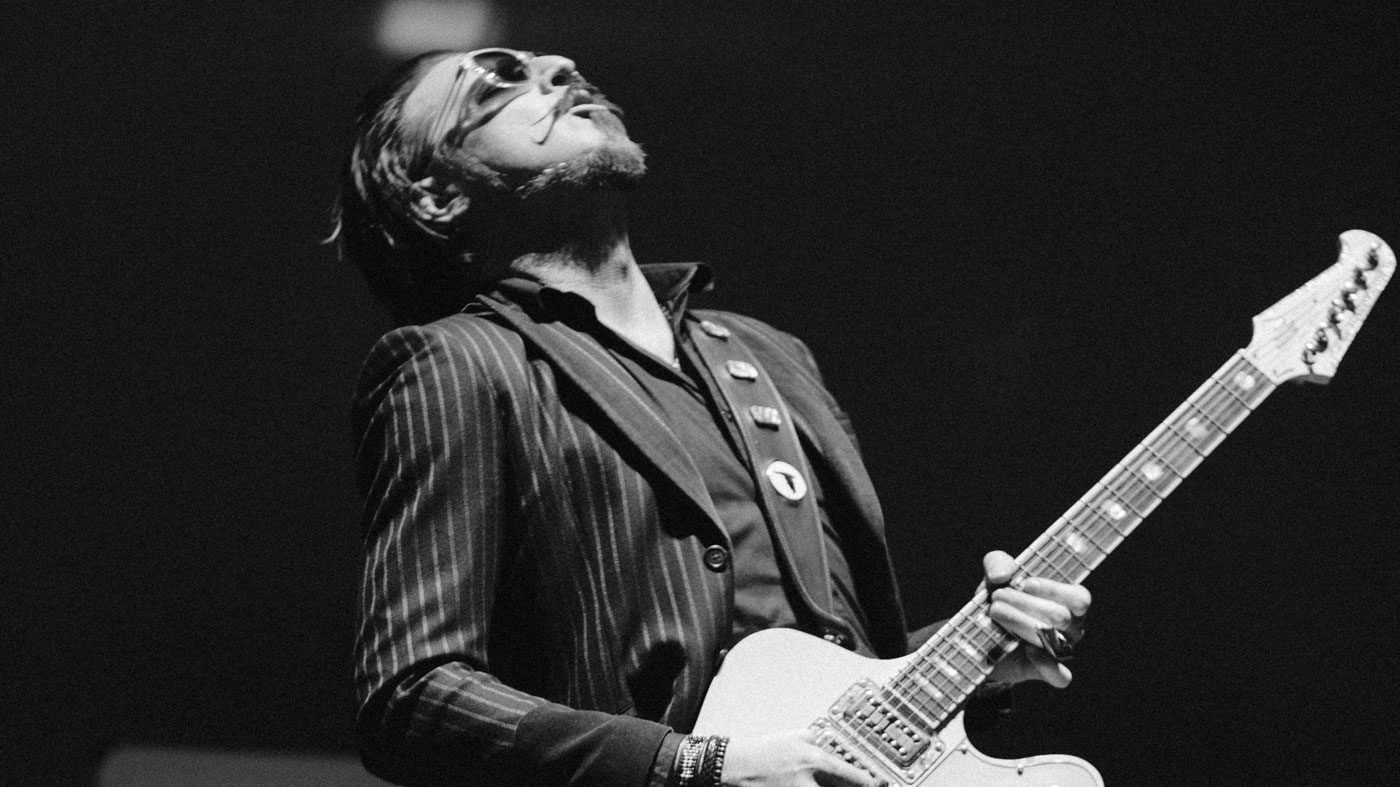
Baritones aren't just for heavy
Scott’s not averse to using gear in a fresh and unconventional ways
A baritone cleaned up really adds more of a Bass VI feel
“I used that baritone on the title track parts one and two. There was one Dave [Cobb] had hanging up in the control room; a really cool Jerry Jones Longhorn. So it was really bright with the lipstick pickups. Technically a really ugly guitar and it was orange, the pressed board and strange shape… but it was still cool. I think it’s really groovy actually - it’s ugly awesome!
“I like that you can hear on Part 1 it’s obviously just gobs of fuzz and gain, and then on Hollow Bones Part 2 you can hear that same guitar really cleaned up. A baritone cleaned up really adds more of a Bass VI feel because it’s tuned A to A, so it’s not quite as much a baritone as it is a Bass VI because of the tuning. It’s very almost spaghetti western when it’s very, very clean like that - really cool.”
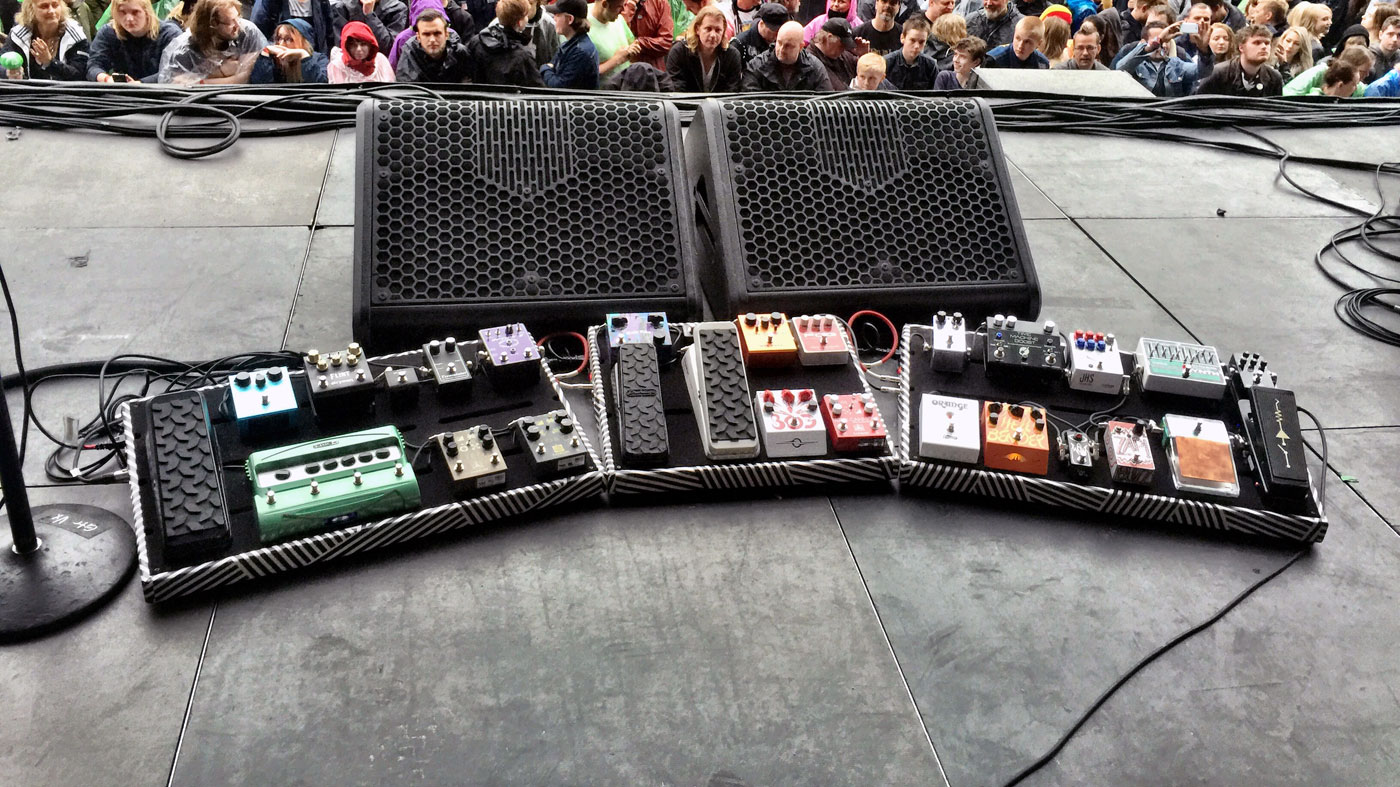
Your pedals are your palette
Having his live ’board in the studio is essential to Scott working fast
If I kick this pedal on with that one, it really doesn’t sound like anybody else. This is my colour
“It’s what must be down for me because it allows me to paint with a lot of colour quickly. Normally when you record you’ll go guitar into amp, and I’ll do that too if I’m overdubbing anything, we’ll go very direct. But if you’re creating off the floor to make it sound like our band, with the palette of colour I use with the pedalboard, it’s very identifiable, very individual.
“Us guitar players, we all build these kind of ’boards, even if it’s just three things, or five… it’s right there. If I kick this pedal on with that one, it really doesn’t sound like anybody else. This is my colour. It’s a very important part of it.”
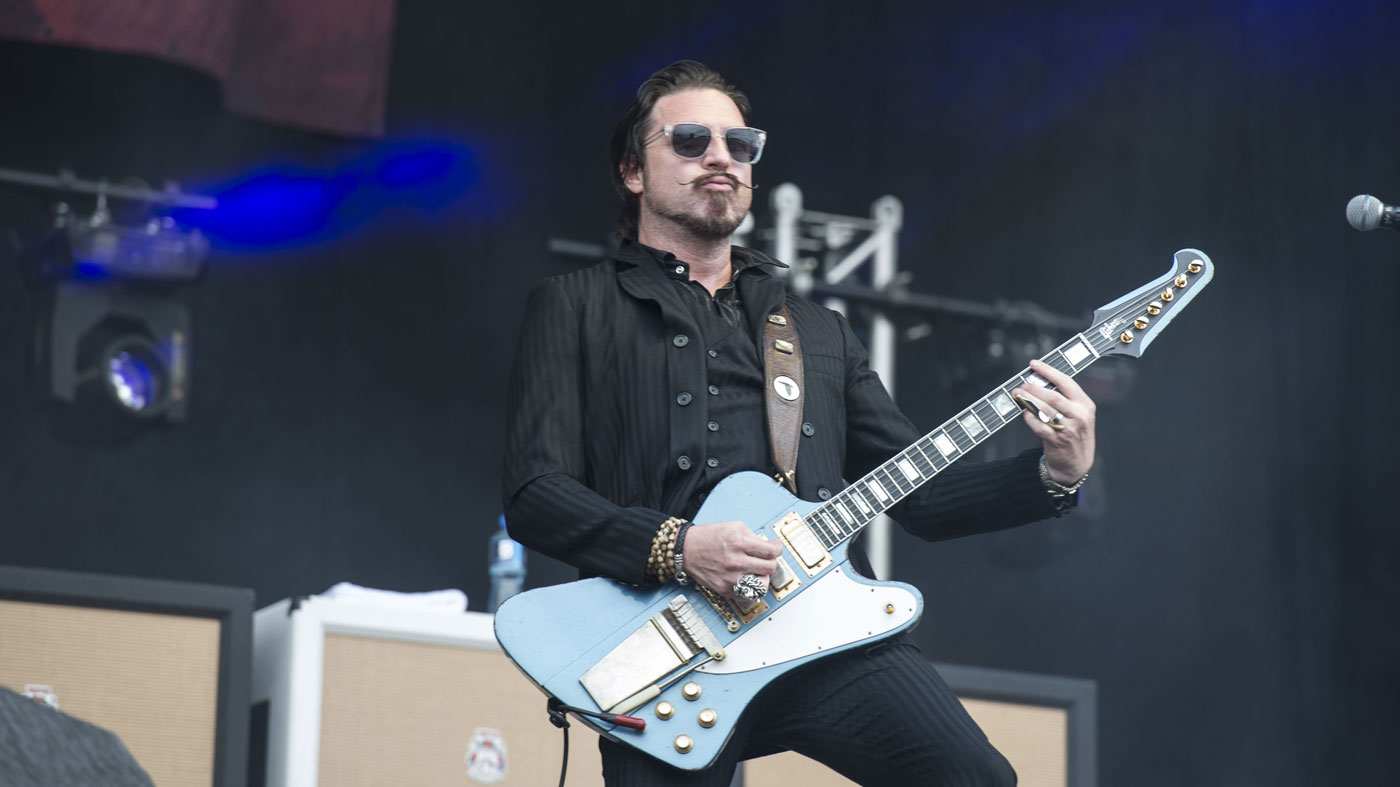
Ditch the stack
The ’Sons don’t need big amps in the studio
“The Magnatone Twilighter is what I used mainly on this record, which I still don’t own, it was one Dave had so I’ll have to reach out to him and grab one.
We’ve just learned through history that these smaller amps really end up sounding much, much larger
“It’s a really, really great sounding amp. It’s very versatile. So that was my live off-the-floor amp and my friends at Supro sent a bunch of stuff out. I tried all of them and they’re all really good but the one that won for us was the Coronado 2x10.
“I did all the overdubbing with that amp, it was all we needed; the Twilight and Coronado. I know everybody thinks you need Marshalls and all these huge amps but it’s very difficult to record big amps in the studio and get them to sound big and right.
“The air, force and volume doesn’t translate through a microphone. It certainly doesn’t translate to Pro Tools, and doesn’t really translate to tape. We’ve just learned through history that these smaller amps really end up sounding much, much larger. And it works every time.”
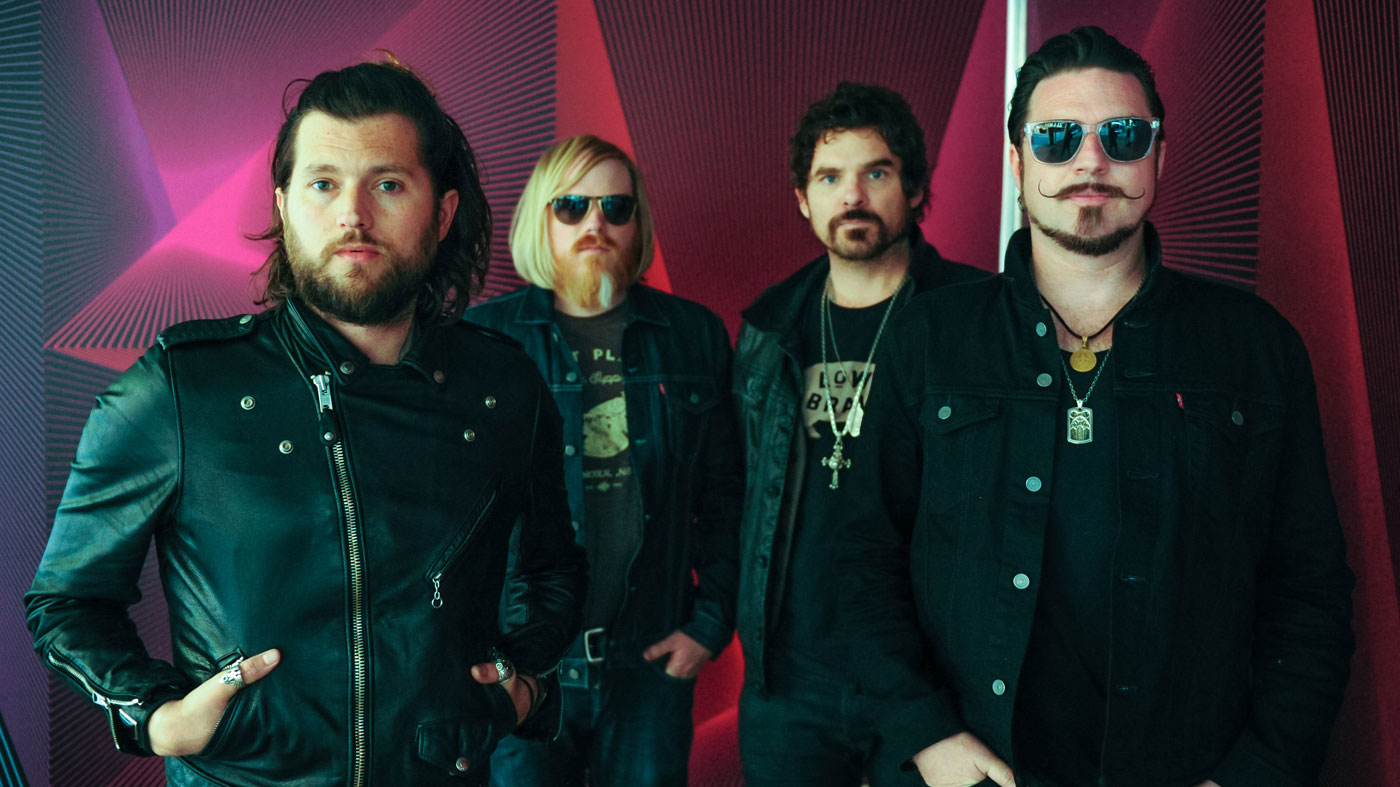
Silence speaks
Everyone gets space to shine in this band - and it benefits Scott
To command any authority, you need to leave room and you need to leave a breath
“Something I’m very conscious of is [playing] is like speaking, if you never leave room for a breathe then it’s hard to find the power in what you’re saying. It’s hard to develop any kind of authority with what you’re saying if you’re constantly saying things.
“All of the great artists display this; it’s ebb and it’s flow, it’s pause and it’s attack. Then you put a lot of emphasis on attack. Especially with the guitar, if you just lay it on and never lay off it’s like, oh my god. I immediately turn it off. This is the problem I’ve had with guitar my whole life. I considered myself almost the anti-guitar solo guy because as much as I love guitar, when it gets too much it just gets too much.
“I can’t take it anymore. To command any authority, you need to leave room and you need to leave a breath. It allows you the chance to come back with a very simple line after that break that means something a lot more powerful.”
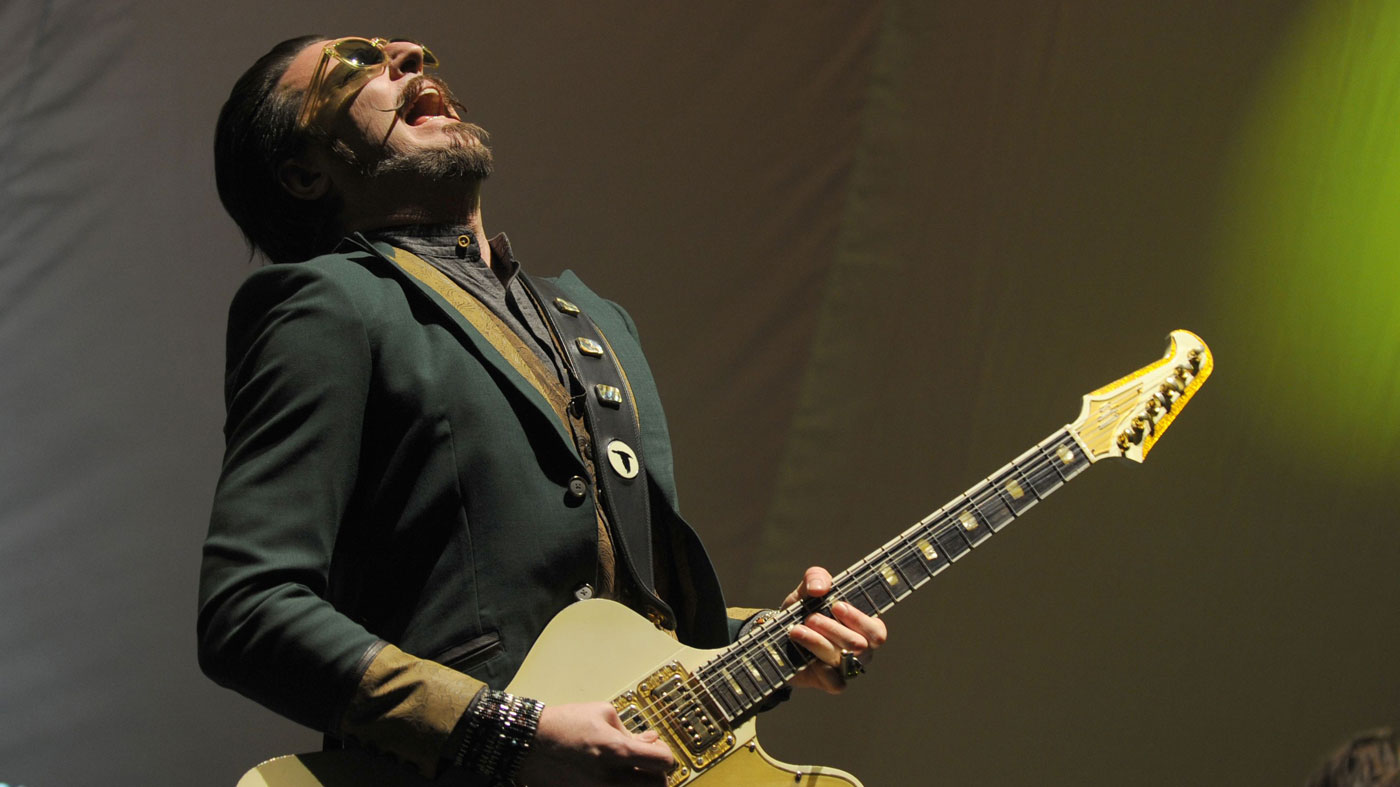
Embrace change
Hollow Bones closing song was a departure for Rival Sons
“Jay brought [All That I Want] in. It’s such a different type of thing. I’m sure people that are going to be like, ‘That’s my favourite song ever, oh my god it’s so beautiful.’ And there’s going to be people saying, ‘That shit sucks - why would you guys put that on this record. You guys are pussies.’
It’s a pretty heavy rock ’n’ roll record. There’s a little angel and a little devil on my shoulder
“I’m sure there’s going to be both because it’s a pretty heavy rock ’n’ roll record. There’s a little angel and a little devil on my shoulder and that’s what they’re doing to me! But in the end, Jay is just a really great writer and that’s a really beautiful song. I was proud of him that he wrote it, and I’m proud that it’s on the record.
“For me sonically, I think I used the Twilighter and I was back in the [open] G for that song. I did the end work, Jay actually played the nylon-string guitar when he sung the vocal - it’s a live performance.
“The band came back through to play the back. I played my ’62 Jazzmaster and did all that kind of Santo & Johnny, very 50s kind of slide work. It was a pedal steel kind of vibe, and just be very, very delicate and stay out of the way of the song while really trying to embellish it and feel it.”

Anatomy of a fuzzlord
Scott Holiday is a fuzz connoisseur with some unusual tastes
If you've heard the last two Rival Sons albums you’ll know Scott has some of the finest fuzz tones around, and it’s been a very natural direction for him to head in.
“I don’t use overdrive pedals really,” he confesses. “The only overdrive I use - the Keeley Time Machine - is really a boost. It’s got to be either a genuine amp overloading sound or a fuzz. I’m not into creamy pedal drive, it’s just not my thing, man. I’m really into valve drive or transistors fighting - that’s more my zone. With that in mind he’s got a fuzz armoury at hand…
It’s got to be either a genuine amp overloading sound or a fuzz. I’m not into creamy pedal drive
“I used a [Electro- Harmonix] Bass Micro Synth on this. That’s something new that created a really angry little fuzz tone. And my normal guys too; an old Roger Mayer, a ZVex Fuzz Pro. Most notably I brought in some stuff from by buddy Du [Menegozzo] at Deep Trip Pedals. I brought a couple of those and they’re fantastic.
“I like all his boxes. I used his new Hellbender as well as the BOG on this record. The Hellbender is all over it. A lot of the stuff I used is what’s on my ’board, I just bring my live stuff in when I’m working. I used the JHS Colorbox on this record and also put that on the ’board.
“I also have some friends from Poland who build me stuff; individual custom boxes. They’re called Karaluch Custom, and every time I play in Poland, these cats will show up with something really beautiful. And they made me this custom box, they called it the Go Ahead Mr Fuzzlord based on Go Ahead John by Miles Davis [Mr Fuzzlord is Scott’s nickname and Go Ahead John was Davis’s collaboration with John McLaughlin, recorded in 1970].
“It’s based on this almost-horn-sounding fuzz, so there’s a trumpet on the graphic as well. There’s a picture of me one the bottom. But this pedal sounds amazing and it’s like a really, really compressed bumble bee. I don’t know exactly what it’s supposed to be after but it sounds a lot like the one John McLaughlin used on Go Ahead John.”
Don't Miss
Rival Sons' Scott Holiday talks Jimmy Page, riff writing and epic guitar performances
Rival Sons' Jay Buchanan talks vocal heroes, honesty and Van Morrison

Rob is the Reviews Editor for GuitarWorld.com and MusicRadar guitars, so spends most of his waking hours (and beyond) thinking about and trying the latest gear while making sure our reviews team is giving you thorough and honest tests of it. He's worked for guitar mags and sites as a writer and editor for nearly 20 years but still winces at the thought of restringing anything with a Floyd Rose.

